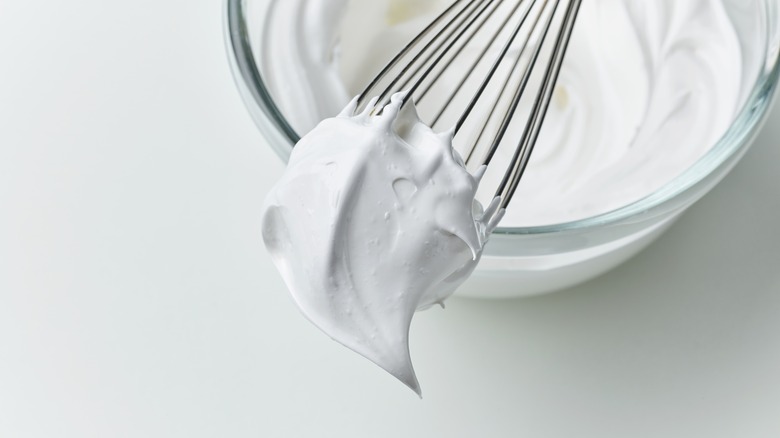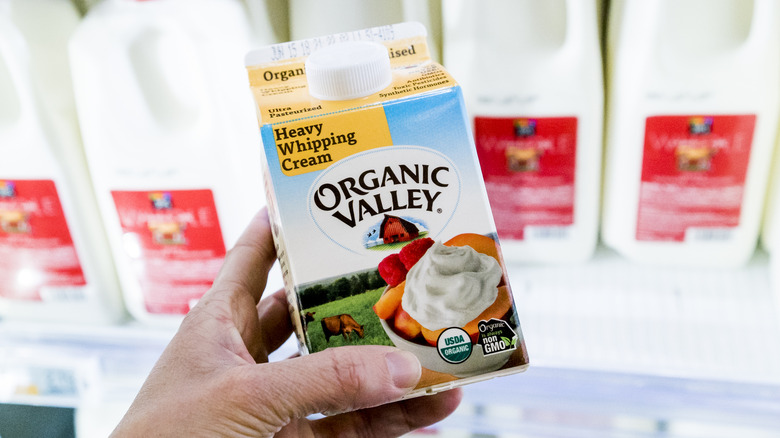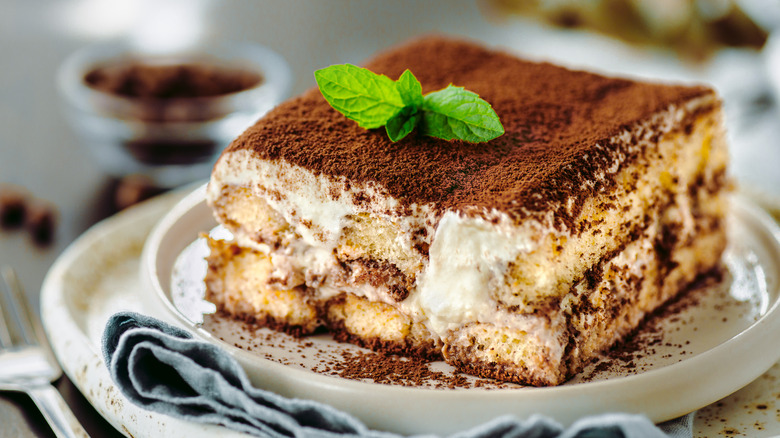What Sets Light Cream Apart From Heavy Cream?
Surprisingly, when it comes to the milk section of your local grocery store, there's a lot to understand. While you might just see a bunch of dairy products in cartons, many of them will have different labels, from whole milk to light cream to heavy cream — and that's only scratching the surface. While the products can be interchangeable, you should know the differences between them because they will all impact a dish differently.
When it comes to light cream and heavy cream, know that the main difference is light cream has less fat than its heavier counterpart, meaning it won't thicken up the same way as heavy cream — and it will curdle more easily. In order to qualify as light cream, the dairy product must contain at least 18% milkfat, but its milkfat cannot exceed 30%. Heavy cream, on the other hand, must contain at least 36% milkfat. The fattier the dairy, the better it will thicken in a dish.
Light cream versus heavy cream
Light cream and heavy cream can substitute for one another, but keep in mind that they will result in different consistencies. Think of it this way: the more fat, the thicker the consistency. It's the same reason butter, which has a whopping 80% milkfat, is so thick to the point that it's a solid. Skim milk, on the other hand, which has almost zero milkfat due to being essentially fat-free, has a consistency similar to water.
Heavy cream is great for use in a thick sauce, such as Alfredo. Paired with butter and parmesan, it creates a thick, rich pasta sauce that blends perfectly with fettuccine. Heavy cream's fat content also makes it great for whipping, and you'll often see it labeled "heavy whipping cream." If you want to create homemade whipped cream, use heavy cream — light cream just doesn't have quite enough fat to properly whip. However, light cream still works well as a base for sauces.
How to substitute light for heavy cream -- and vice versa
If a recipe calls for light cream, and you only have the heavier version on hand, don't stress too much. It's fairly easy to substitute in this direction. The best way to do this is to dilute heavy cream with a bit of whole milk. If you don't have heavy cream either, then substitute evaporated milk or half and half for light cream. You can also use full-fat canned coconut milk in recipes, depending on how well its flavor will pair with what you're making.
When it comes to substituting heavy cream, you can simply use light cream in its place if you're making something like an Alfredo sauce. While the light cream won't thicken quite as much and might not be as rich as heavy cream, it will still suffice as an even substitute and get the job done. However, light cream will not work as a substitute if you're planning to whip the cream, given that its lower fat percentage won't whip as well so it won't be as solid — which is what you need generally when using it for desserts. In this case, you're better off using the heavy whipping cream that recipes like homemade tiramisu call for.


